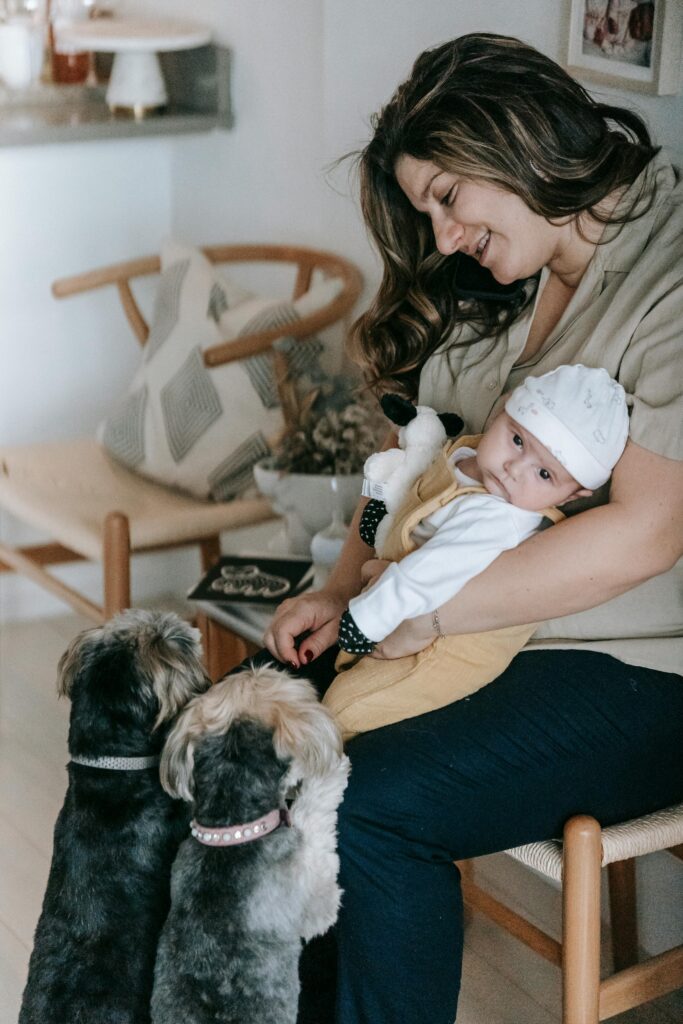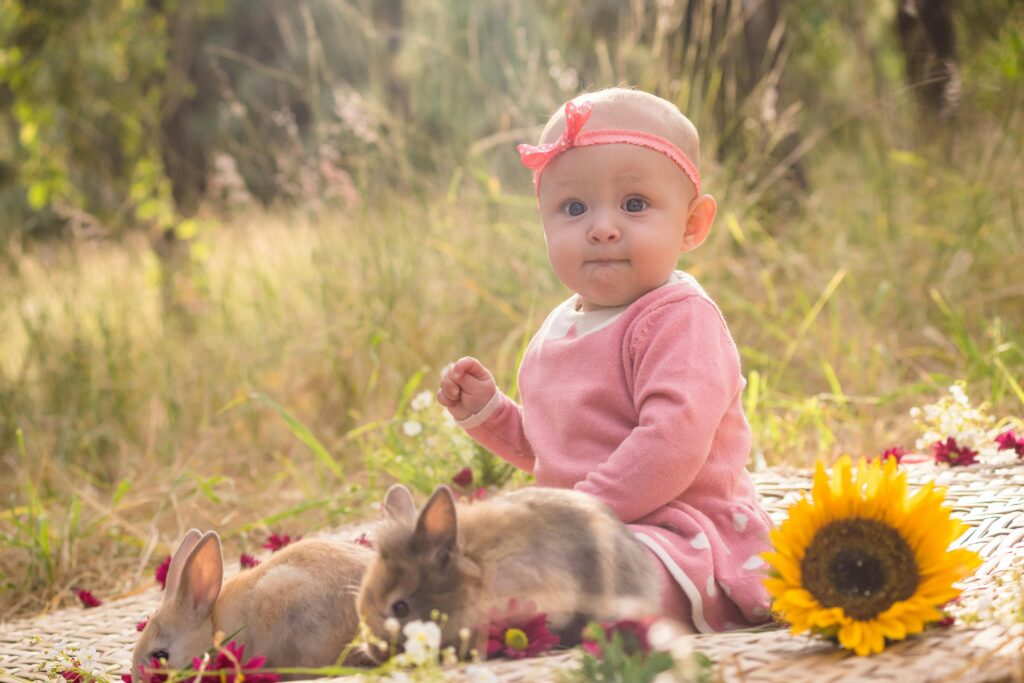Bringing a newborn into your home or introducing young children to your pet can be a rewarding but delicate experience. Both pets and kids need to feel comfortable and secure during the transition. With careful planning and gradual introductions, you can help foster a positive bond between your pet and the newest members of your family. Here’s how to safely introduce your pet to newborns and children.
Prepare Your Pet in Advance

The key to a smooth introduction is preparation. Before the baby arrives or the children meet your pet for the first time, start by gradually getting your pet used to the new changes in your home. If you’re expecting a baby, let your pet explore the nursery, sniff new baby gear, and even hear recordings of baby sounds like crying or cooing. This way, the new sights, smells, and sounds won’t come as a complete surprise.
If your pet is particularly attached to a certain room or piece of furniture that will soon be occupied by the baby, start setting boundaries early. Allow your pet to adjust to new rules, such as not jumping on the baby’s crib or staying out of the nursery unless invited. This will help reduce anxiety and confusion when the baby finally comes home.
Keep First Impressions Calm and Controlled
The initial introduction should be calm and controlled to prevent any fear or overstimulation. For dogs, it can help to take them for a long walk or play a vigorous game to burn off excess energy before the introduction. Once they’re calm, allow them to sniff the baby or child from a safe distance while you offer reassurance and praise.
For cats, let them approach at their own pace. Cats are naturally more cautious, so give them space and allow them to observe the baby or child from a distance until they feel comfortable enough to investigate. For all pets, it’s important to stay relaxed and maintain a positive tone to signal that this new addition is something to be welcomed, not feared.
Supervise All Interactions
Supervision is crucial, especially during the first few weeks of interactions between pets and babies or young children. Never leave a pet and a newborn or toddler alone together, no matter how well-behaved your pet is. Pets can be unpredictable, and small children may unintentionally provoke reactions by pulling on tails or fur.
Teach children how to interact gently with your pet, avoiding rough play or grabbing. Show them the right way to pet the animal, and explain the importance of respecting the pet’s space. Reward your pet for calm behavior around the child to reinforce positive associations.
Create Safe Zones for Your Pet

Introducing a newborn or young children can be overwhelming for pets, so it’s important that they have a designated “safe zone” where they can retreat when they need some peace and quiet. This could be a crate, bed, or a separate room where they can escape the hustle and bustle.
If your pet feels secure and knows they can get away when things become too much, they’re more likely to remain calm and tolerant of the new changes. Teach children to respect these safe zones and to never disturb your pet when they’re in their retreat.
Use Positive Reinforcement
Positive reinforcement is one of the best ways to help your pet associate good things with the presence of a new baby or child. Reward your pet with treats, praise, and affection whenever they display calm and gentle behavior around the new family member. This helps them understand that positive interactions lead to rewards, which can foster a more peaceful relationship.
For dogs, you can practice basic commands like “sit,” “stay,” or “leave it” around the baby to reinforce good behavior and prevent overexcitement. For cats, rewarding them for calmly observing the baby from a distance can build positive associations with the new addition.
Gradually Increase Interaction Time

At first, your pet may only want brief encounters with the new baby or children, and that’s perfectly fine. Don’t rush the process—let your pet decide when they’re comfortable getting closer. Over time, as they get used to the baby’s sounds and movements or the presence of children, you can gradually allow longer and more direct interactions.
Watch for signs of stress, such as pacing, panting, or hiding, and allow your pet to take breaks if they seem overwhelmed. The goal is to slowly build a positive, relaxed relationship between your pet and the new family member.
Be Patient and Consistent
Introducing pets to newborns and children is a gradual process that requires patience and consistency. Every pet reacts differently—some may take to the new situation right away, while others may need more time to adjust. Stay calm and consistent with your approach, and give your pet the space they need to adapt at their own pace.
In time, with positive reinforcement and careful supervision, your pet and your child can form a strong, loving bond that will last for years.
By preparing your pet in advance, supervising their interactions, and using positive reinforcement, you can ensure a smooth and safe introduction between your furry friend and your new family members. With time and patience, you’ll help build a positive relationship that benefits both your pet and your child.


